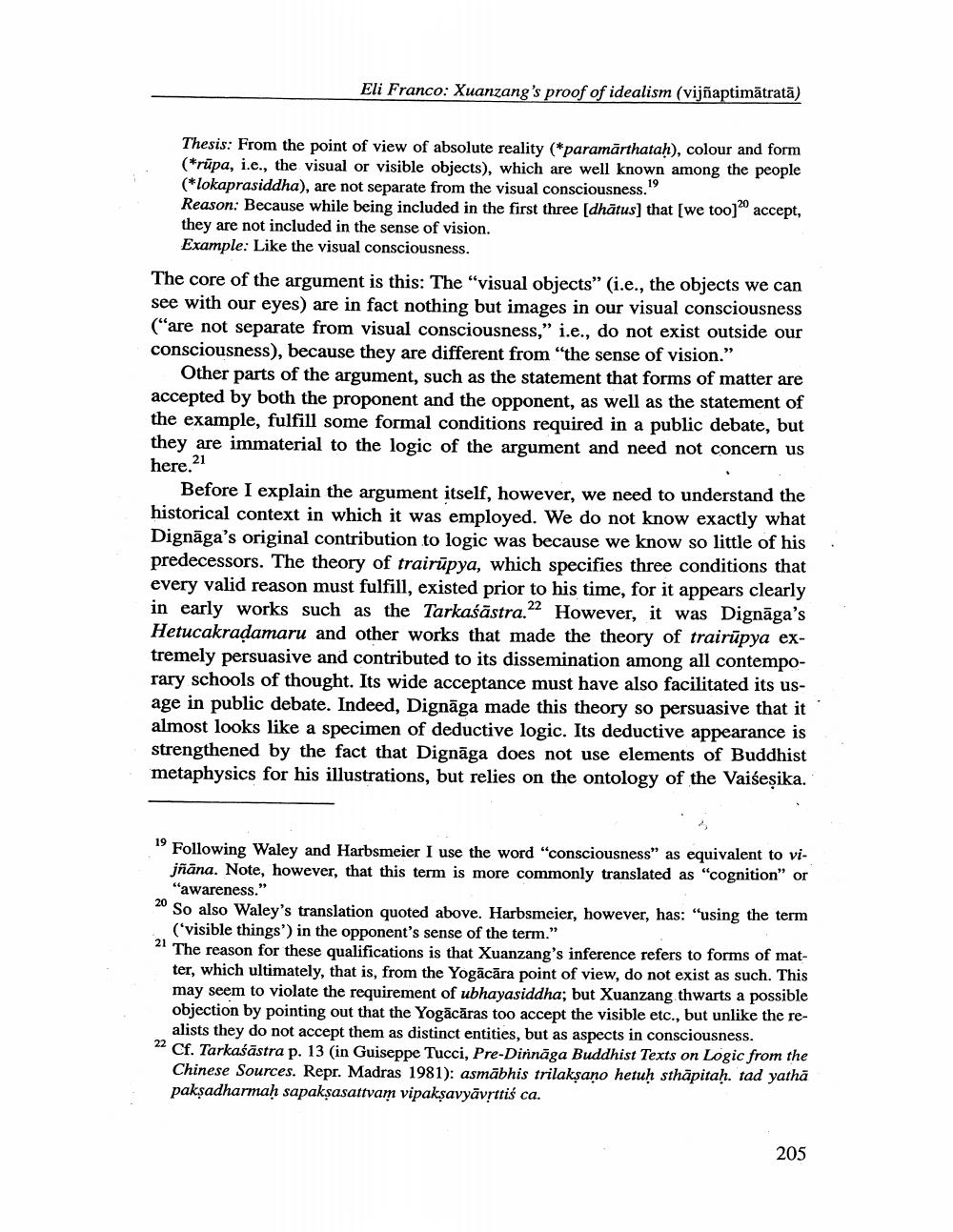________________
Eli Franco: Xuanzang's proof of idealism (vijñaptimātratā)
Thesis: From the point of view of absolute reality (*paramārthatah), colour and form (*rūpa, i.e., the visual or visible objects), which are well known among the people (*lokaprasiddha), are not separate from the visual consciousness." Reason: Because while being included in the first three [dhātus) that (we too] accept, they are not included in the sense of vision.
Example: Like the visual consciousness. The core of the argument is this: The "visual objects” (i.e., the objects we can see with our eyes) are in fact nothing but images in our visual consciousness ("are not separate from visual consciousness," i.e., do not exist outside our consciousness), because they are different from the sense of vision."
Other parts of the argument, such as the statement that forms of matter are accepted by both the proponent and the opponent, as well as the statement of the example, fulfill some formal conditions required in a public debate, but they are immaterial to the logic of the argument and need not concern us here.21
Before I explain the argument itself, however, we need to understand the historical context in which it was employed. We do not know exactly what Dignāga's original contribution to logic was because we know so little of his predecessors. The theory of trairūpya, which specifies three conditions that every valid reason must fulfill, existed prior to his time, for it appears clearly in early works such as the Tarkaśāstra.22 However, it was Dignāga's Hetucakradamaru and other works that made the theory of trairūpya extremely persuasive and contributed to its dissemination among all contemporary schools of thought. Its wide acceptance must have also facilitated its usage in public debate. Indeed, Dignāga made this theory so persuasive that it almost looks like a specimen of deductive logic. Its deductive appearance is strengthened by the fact that Dignāga does not use elements of Buddhist metaphysics for his illustrations, but relies on the ontology of the Vaiseșika.
19 Following Waley and Harbsmeier I use the word "consciousness" as equivalent to vi
jñāna. Note, however, that this term is more commonly translated as "cognition" or
"awareness." 20 So also Waley's translation quoted above. Harbsmeier, however, has: "using the term
('visible things') in the opponent's sense of the term." 21 The reason for these qualifications is that Xuanzang's inference refers to forms of mat
ter, which ultimately, that is, from the Yogācāra point of view, do not exist as such. This may seem to violate the requirement of ubhayasiddha; but Xuanzang thwarts a possible objection by pointing out that the Yogācāras too accept the visible etc., but unlike the realists they do not accept them as distinct entities, but as aspects in consciousness. Cf. Tarkaśāstra p. 13 (in Guiseppe Tucci, Pre-Dinnāga Buddhist Texts on Logic from the Chinese Sources. Repr. Madras 1981): asmābhis trilakṣano hetuh sthapitaḥ. tad yathā pakşadharmaḥ sapaksasattvam vipakşavyāvrttiś ca.
205




